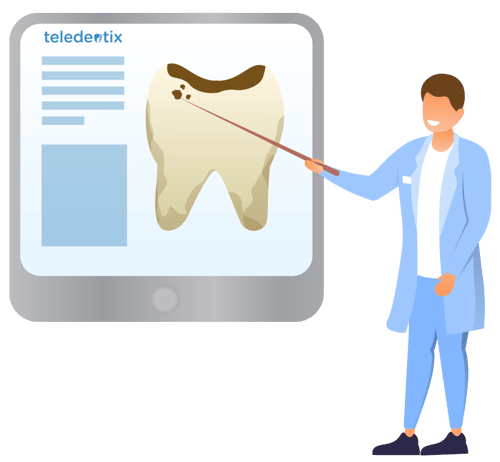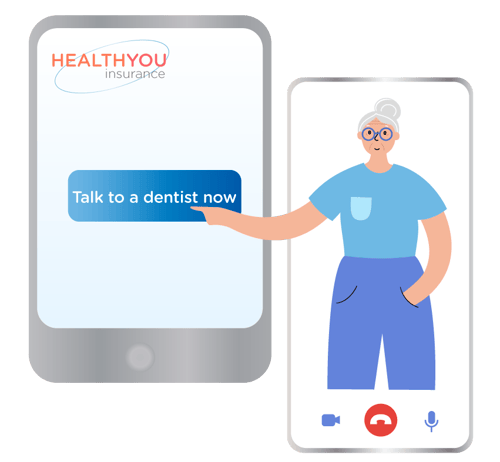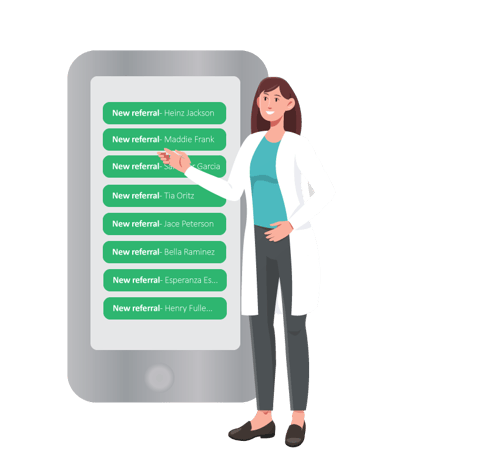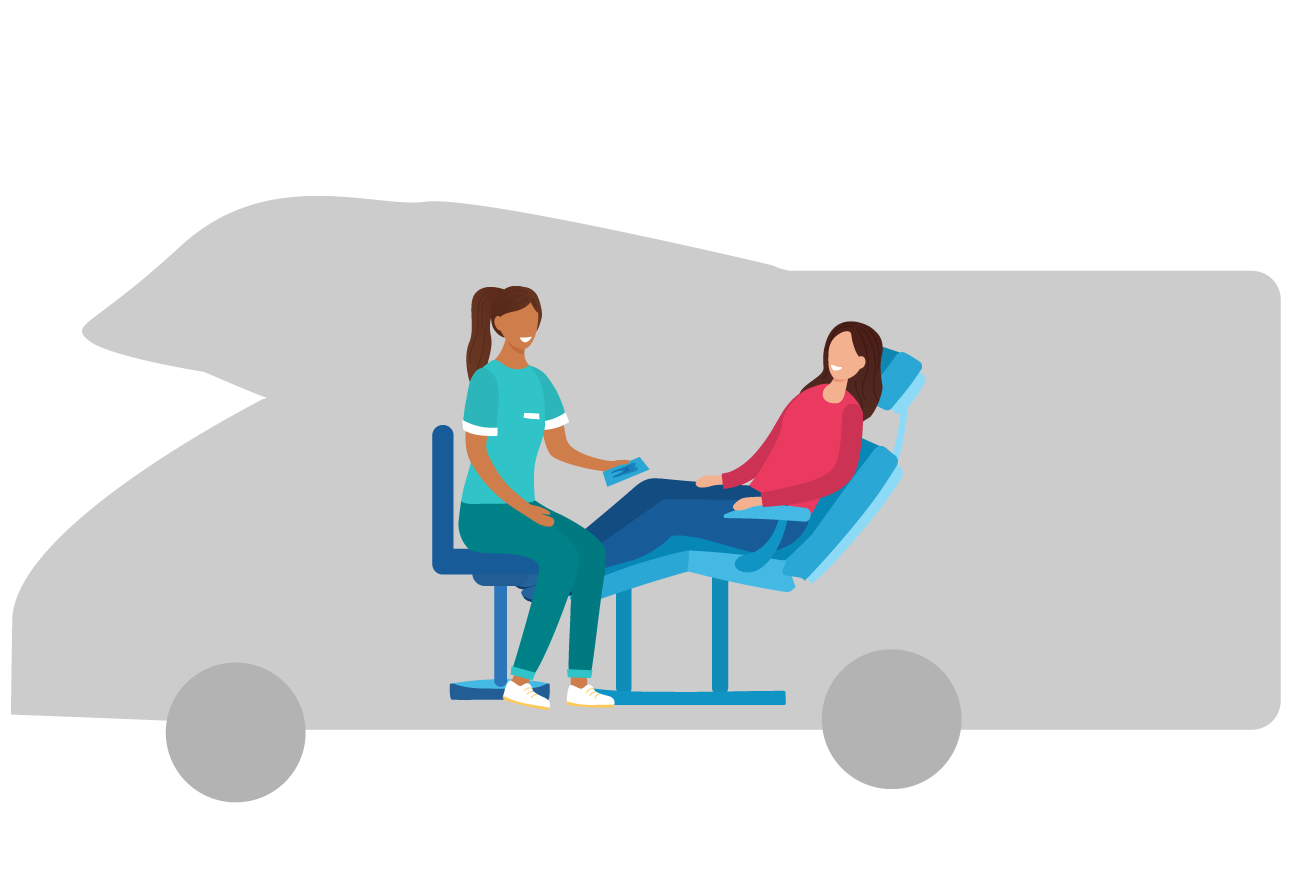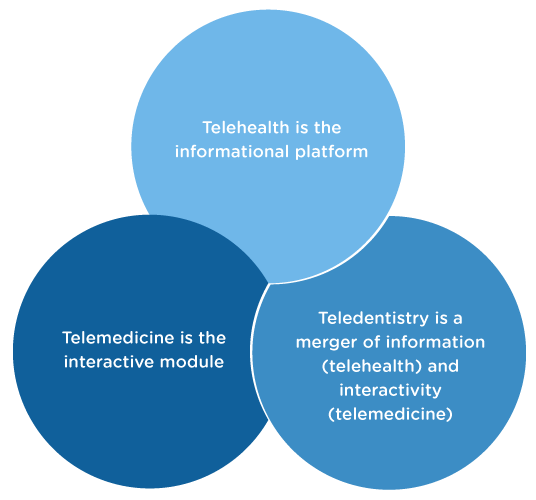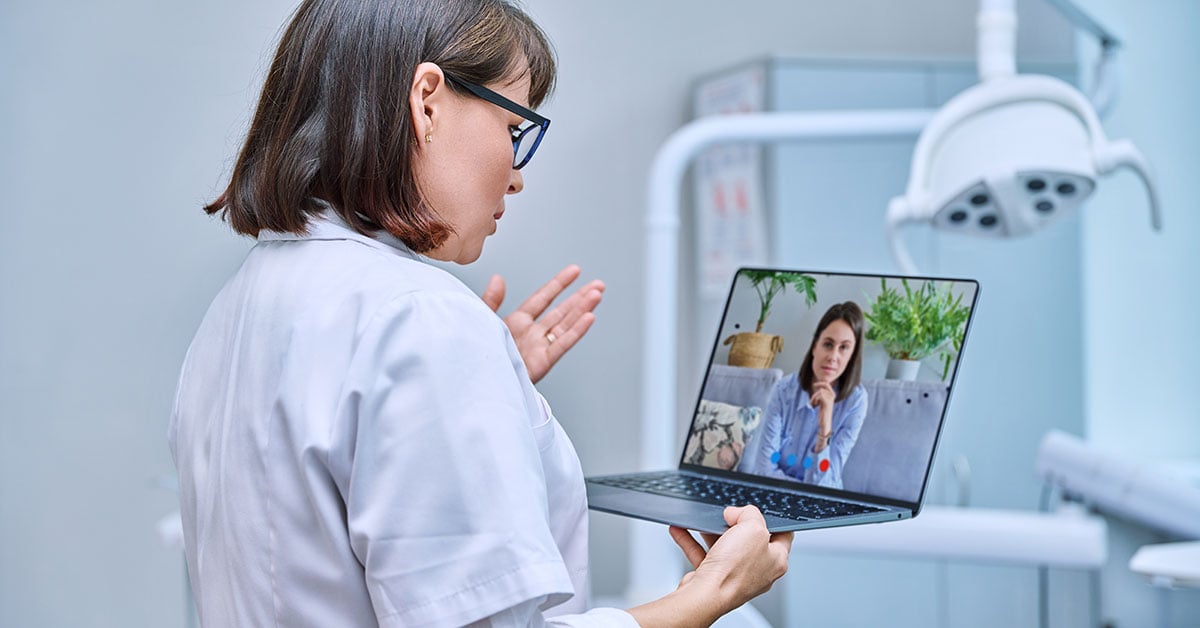Being forced to adapt can be a good thing. Among those adaptive services that rose to the challenges during the 2020 COVID-19 pandemic is teledentistry.
While the technology has been around for a bit, you’re now in a superb position to continue innovating around some distinctive uses of teledentistry.
The teledentistry pivot from “meh” to mainstream
Prior to forced adaptation during COVID-19 you might have been among those dentists who merely gave teledentistry a “meh” and a passing glance. Perhaps you dabbled in it by cobbling together a quasi-virtual platform using available video tools to test the water.
The teledentistry emergence also generated a few questions:
- How to transition from face-to-face exams to virtual exams without losing diagnostic accuracy?
- How to be assured of payment for a virtual consultation? And what about insurance support?
- How to capitalize on the marketing opportunities for providing the service?
Those questions and most have solid answers. Credit teledentistry’s test-drive during the COVID-19 era of patient access to care.
As use-case scenarios gained positive traction teledentistry is now somewhat mainstream. Innovation and platform support for teledentistry services has significantly increased.
Speaking of…let’s explore some of those distinctive innovations and how they directly apply to your dental practice.
Seven distinctive uses for teledentistry
1. In the traditional dental office
COVID-19 and the cautionary parameters it created has changed how you and your patients view dentistry. While visits are increasing (and will likely continue to do so) it’s a good idea to build on teledentistry’s momentum.
Here are few key pivots for your dental practice:
- Expanded patient care and care access. Some patients face the same challenge they did before COVID-19 - lack of access to dental care. Teledentistry provides care access to rural or under-served communities and it provides a convenient option for current patients with dental conditions, related questions, and dental emergencies.
- Saving on PPE. The “safe” space of a virtual consultation requires no use of infection control protocols - especially involving PPE. Those cost savings could be invested in upgrading your teledentistry platform and related technology among other initiatives.
- Managing In-office patient flow. As patient demand for dentistry increases, teledentistry allows you to conduct more dental visits (virtually). This frees up chair-space for procedures and treatment.
- Case presentations. These take time. Teledentistry allows you to slow the pace and get to acceptance while decreasing in-office delays.
- Virtual “open-house”. Imagine being able to connect with potential new patients via the convenience of your teledentistry platform. Add online Q&A sessions, consultations, and meet & greets to the list of virtual innovations.
2. Mobile teledentistry solutions
A dedicated teledentistry platform enables you to remove the barriers to dental care. This pivot doesn’t detract from the standard, fixed facility care model - it reframes it.
- A mobile dental clinic (e.g. a retrofitted RV, etc) is equipped with exam and diagnostic equipment, sterilization equipment, and computer technology for scheduling, access to patient data, and insurance claims processing.
- A mobile dental service unit provides routine dental care including initial exams, x-rays, teeth cleanings, screenings, and fillings and sealants.
- Full-service mobile dentistry delivery by innovative companies such as Onsite Dental and Flossbar are equipped with staff that can provide a full range of dentistry (including restorative services) to businesses, corporations, and other remote locations.
3. Insurance and payer network relationships
We’ve described this connection as “a-hand-extended-across-the-aisle.” In many ways it’s because of the potential for e
nhancing your relationship with insurance payers.
Teledentistry forms the common ground between you as the service provider and the insurance company. The insurance industry is seeing the potential of virtual services.
- Patient demand for virtual solutions
- Comparative parallels between medical (telehealth/telemedicine) and dental (teledentistry) as effective care delivery platforms - including medical-dental collaboration
- Enhanced community-based care options
- Triage networks for on-demand, 24/7 dental access
Insurance providers see the patient-facing potential of teledentistry. And with it their profit potential alongside your adoption of the technology.
4. Niche and broad network potential
Think of the mutual benefit to you (the dentist) and other dental industry companies who meet a patient-facing need.
- Night-guards and grind-guard technology
- Dry mouth treatment and related prescriptions
- The vast number of dental therapies and products that rely on direct consultations and/or prescriptions for access
There’s also the broader network connection between dentists who provide specific services. Consider those who specialize in emergency triage and case consultations.
Patients and providers can be virtually connected via a teledentistry platform. And it surpasses occasional insurance issues.
5. Independent Mobile Hygienists
Under the ADHA (American Dental Hygiene Association) definition and guidelines a dental hygienist can function independent of a dentist’s authorization. This opportunity is limited to those with state approval (40% of states have approved direct access care).
Excluding restorative services an independent mobile/direct access hygienist can provide the following preventive-based services:
- Oral cancer screenings
- Periodontal assessments
- General oral health assessments
- Consultations with dentists and/or physicians regarding a patient’s oral or general health condition
- Periodontal therapy
- Fluoride
- Oral health education
- Nutritional guidance
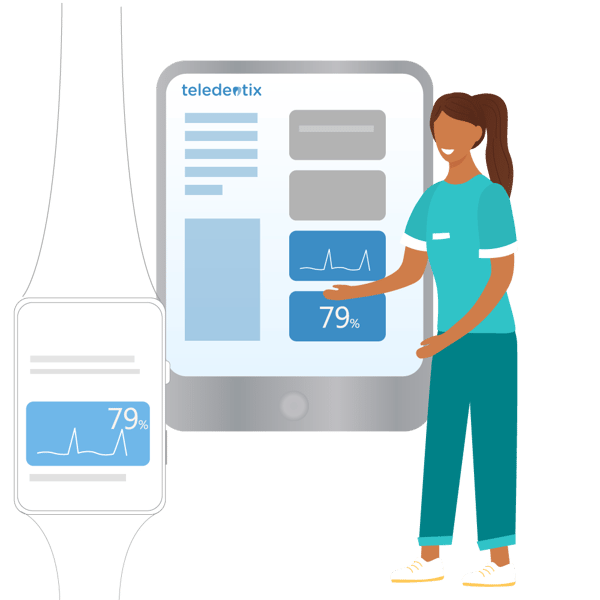
6. Device support
Some dental services and treatment protocols require corollary device support. Ongoing consultations and patient monitoring could also be necessary.
Teledentisty technology provides specific niche network support for:
- Monitoring and collection of vitals (e.g. Apple Watch, etc)
- Sleep apnea therapies and devices
7. Medical-Dental integration
You as the the dental provider can easily collaborate with necessary medical providers on a secure, HIPAA compliant virtual platform. The teledentistry-telehealth/telemedicine connection is an emerging systemic care strategy.
- You (the dentist) and a patient’s primary care physician (PCP) can establish a relationship that serves the patient holistically.
- Collaboration around essential health information (e.g. diabetes, hypertension, periodontal disease, etc) is more convenient and timely via a virtual platform.
- Health and dental data can be updated and shared in real time without delaying treatment or care protocols.
Check out these resources for a deeper-dive into expanded patient care using teledentistry and mobile dental solutions:
An Overview and Guide to Mobile Dentistry
A patient-facing solution that streamlines and upgrades your care standards
The solutions within a dedicated teledentistry platform and mobile dentistry opportunities enables you to fully maximize your virtual patient interactions…leading to exceptional and technology relevant patient care!
Teledentix is an innovative, turn-key teledentistry solution created by Virtual Dental Care. The all-in-one platform will enable you to adapt teledentistry to your patient care and extend your services beyond the walls of your dental practice…and improve your patient care in the process.
- Teledentix provides an easy-to-use video conferencing tool that’s secure, HIPAA compliant, and specific to dentistry.
- Teledentix Basic is a perfect starting point. Begin with a free trial and then transition to a very low monthly fee. You and your patients can join unlimited video conferences including screen-share, file-share, video-share, and real-time chat communications.
LEARN MORE about the Teledentix platform.
